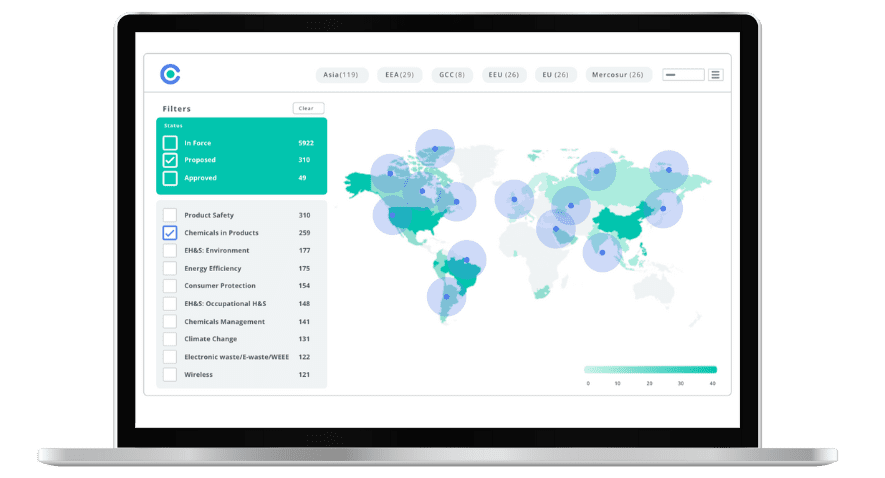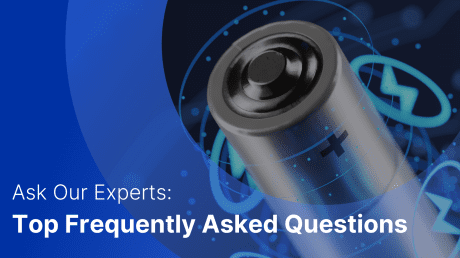
Key Takeaways From ICPHSO Product Safety Training Workshop

This blog was originally posted on 9th July, 2024. Further regulatory developments may have occurred after publication. To keep up-to-date with the latest compliance news, sign up to our newsletter.
AUTHORED BY KIM PLASSCHE, SENIOR REGULATORY CONSULTANT, COMPLIANCE & RISKS
ICPHSO North America Product Safety Training Workshop, June 2024
The International Consumer Product Health and Safety Organization (ICPHSO) North America Product Safety Training Workshop was held in Bentonville, Arkansas on 26 June.
Compliance professionals, attorneys, consumer advocates, and manufacturers were in attendance. Experts debated topics including per-and polyfluoroalkyl substances (PFAS) regulation, recalls efficacy, artificial intelligence (AI), lithium-ion battery dangers, and compliance programs. This year’s conference included a unique presentation on the fire hazards of lithium-ion batteries, and welcomed insights on the topic from fire investigators representing two regions in North America.
This blog summarizes the key takeaways from this, and other panels held at the conference.
Key Takeaways
- As US states and the federal government grapple with the regulation of PFAS, manufacturers face many uncertainties in compliance with the varying laws
- Many consumers do not take action during a product recall, but there are steps manufacturers and retailers can take to increase the return of dangerous products
- In the fast-moving field of AI, there are countless possibilities for incorporating this technology into products, but there are privacy risks manufacturers must consider
- The rate of explosions and fires stemming from the use of lithium-ion batteries has increased exponentially, and these are primarily due to consumer misuse
- Good company compliance programs can have a positive impact on the business, but leadership must provide necessary resources to achieve this
Differences in PFAS Definitions, Limits and Testing Within State Regulations Causes a Compliance Fiasco
Five PFAS experts outlined the science behind PFAS chemicals, which presents difficulty in testing. Options for testing include targeted and non-targeted methods, and ASTM is currently working on an extractable organofluorine (EOF) method. Another issue is the naming of PFAS. A now-common refrain in the world of compliance is “what are PFAS?”, and the varying definitions in US state and federal law is only complicating the situation.
- Individual PFAS categories and synonyms, as named in different laws, include PFOA, PFHxS, and GenX chemicals
- One solution to manage compliance is to refer to the CAS number, and not the synonym, in internal documentation and testing
Another issue is the scope of products regulated in individual laws. While many laws ensure an eventual total ban of PFAS, they take a phased approach and implement timelines. Others regulate the chemical only at the product-level, and even then, the definitions of such products can vary. For instance, California’s AB 1817 has a broad definition of textiles, including nylon and jute, that is not seen in other laws and bills.
- The panel recommends starting compliance with high-risk products such as waterproofing or stain resistant items
- Another approach is to focus on what the company’s bestselling products are in California and New York, for instance
AI Can Have a Positive Impact on the Consumer Experience of Electronics, but Privacy Risks Must be Considered
This session focused on AI in the US, and did not cover the European Union’s Artificial Intelligence Act.
Some examples of how AI may be used in products, specifically appliances, includes in ovens to detect food and cook it at the best temperature and time for the specific type of food. Refrigerators may also incorporate AI to track the items housed in the appliance and generate shopping lists or recipes for consumers.
- Concerns raised with the incorporation of technology in these examples focus on privacy
- Would information about the consumer be sold to brands, or used for advertising?
- An expert recommended only collecting the data you need to accomplish the AI task, and nothing more that consumers can suspect is used nefariously
- Loss of consumer control is another potential risk; this must be remedied by ensuring the user can always take over operation of the device from the AI system
The Increase of Fires From Electronic Devices are Causing Concern for Fire Investigators
This panel featured two special guests, fire investigators from California and Ontario.
The investigators shared video of fire events in homes and on public transportation, emphasizing that these occurred as a result of “mixing and matching” charging devices, cables and batteries.
- No risks are involved when consumers use manufacturer-recommended devices and chargers
- The availability of products sold online boasting “compatible with” certain devices, combined with the low cost, lead consumers to believe they are safe to use
- The battle against knockoffs and unauthorized products, a familiar one for manufacturers, is difficult to navigate
- Rigorous testing of batteries in controlled conditions can help ensure a safer product
Recalls and Compliance Programs are Hot Topics
Another panel presented the results of their survey of 2,087 consumers regarding recalls. The survey focused on product registration, preferred methods of contact in the event of a recall, likeliness to respond to a recall, and purchasing habits on secondary markets that may be selling recalled products.
- The preference for contact varied, but more than half of the respondents (54%) would like contact by email or physical mail
- Many consumers indicated they would rather destroy a product themselves or continue using it, due to the hassle of returning the item in-store
- Consumers also admitted to knowingly purchasing recalled items on resale websites or at garage sales
- Implementing a robust recall program to incorporate many contact methods, and getting creative (such as enlisting the help of online influencers), can ensure more consumers are aware of recalls
- Enlisting the assistance of retailers to ensure an easier return process can increase the return rate of recalled products
Internal compliance programs are vital to a business. In an interactive session, attendees voiced their needs to achieve positive results within their programs. The panelists, representing manufacturers and compliance partners, echoed these sentiments.
These included:
- Recognition from senior leadership;
- Larger compliance teams;
- Financing;
- Partnership with experts;
- Accurate information; and
- Up-to-date information and legislative tracking.
Stay Ahead Of Regulatory Changes
Want to stay ahead of regulatory developments and access expert insights from events like the ICPHSO Product Safety Training Workshop?
Accelerate your ability to achieve, maintain & expand market access for all products in global markets with C2P – Your key to unlocking market access, trusted by more than 300 of the world’s leading brands.
C2P is an enterprise SaaS platform providing everything you need in one place to achieve your business objectives by proving compliance in 195 countries.
C2P is purpose-built to be tailored to your specific needs with comprehensive capabilities that enable enterprise-wide management of regulations, standards, requirements and evidence.
Add-on packages help accelerate market access through use-case-specific solutions, global regulatory content, a global team of subject matter experts and professional services.
- Accelerate time-to-market for products
- Reduce non-compliance risks that impact your ability to meet business goals and cause reputational damage
- Enable business continuity by digitizing your compliance process and building corporate memory
- Improve efficiency and enable your team to focus on business critical initiatives rather than manual tasks
- Save time with access to Compliance & Risks’ extensive Knowledge Partner network

Global RoHS Comparison Table
A high-level snapshot of RoHS rules impacting EEE today, in a format allowing direct comparison of the standard applied from the EU to UAE, India and beyond.


